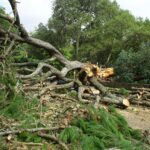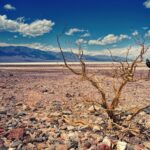At a glance:
- Tree removal is an important part of nature conservation and can help prevent the spread of invasive species.
- Despite the fact that the tree may be on your property, the decision to remove it may not always be yours.
- Additionally, safety is a major factor when determining what trees can be removed without permission.
You can remove trees easily with a chainsaw, right? Hold on! When removing a tree in Melbourne, there are some important things to consider to keep your property and neighbours safe.
Are you planning to remove a tree from your property but don’t know where to start? Before you start the process of removing a tree, it is essential to identify the species and understand why this step is so important.
Importance of identifying tree species before the removal process
Tree removal is an important part of nature conservation and can help prevent the spread of invasive species. Removing trees can also help to improve the health of existing trees, increase air circulation & sunlight exposure, and improve the aesthetics of an area.
Identifying tree species before removal is a crucial step in the process of tree removal. Different invasive species may require different permits in order to be cut down, and it is important to understand these regulations before proceeding with the removal process. Considering the potential impact of tree removal on ecosystems is also important.
Factors to consider while removing tree species
Legal Regulations
The legal regulations in your area must be followed when removing a tree species. Some jurisdictions prohibit tree removal without permission from the local government.
Despite the fact that the tree may be on your property, the decision to remove it may not always be yours. The laws and regulations governing tree removal vary from council to council across Australia. In addition, some trees are protected by environmental laws too. To avoid this, it’s important to research the rules of your local council prior to cutting down a tree.
Failure to do so can lead to steep fines and fees. A local tree removal specialist will usually be familiar with all the relevant rules and regulations, so you won’t have to worry about navigating through local council requirements.
Environmental impact
Tree removal can affect the environment significantly if it isn’t done properly. Before removing trees, it is crucial to identify their species so that removal can be done in a responsible and eco-friendly manner. Why? Here are a few reasons:
Loss of habitat:
Many animals and insects find shelter and habitat in trees. If a tree is removed without considering some endangered species, then these animals may be displaced and the ecosystem may be disrupted.
Soil erosion:
Soil erosion is prevented by trees by holding soil in place with their roots. It is possible to damage nearby plants and vegetation when a tree that prevents erosion is removed. This can result in soil degradation.
Carbon emissions:
Climate change is caused by greenhouse gases such as carbon dioxide, which are absorbed by trees. When trees are removed without considering their species, large quantities of carbon dioxide could be released into the atmosphere.
Impact on air quality:
In addition to purifying the air, trees also absorb pollutants such as ozone and particulate matter. Air quality can be negatively affected by removing trees without considering the species.
Safety Concerns
Safety is a paramount concern when considering tree removal. It is important to ensure that any tree species that is to be removed is not a danger to property or people. This can be evaluated through a hazard tree assessment, which looks at factors such as decay, root health, and stability.
Potential hazard
When a tree is identified as a potential hazard, it is important to evaluate the risk of damage or injury it may cause before any removal, or corrective treatments are carried out. The age and species of a tree can help determine the extent of the hazard and if any corrective treatments should be considered.
Types of trees species that can be cut with/without permission
Some tree species may need permission to be cut, while others may not. Trees that typically require permission to be cut down include those that are native, endangered, protected, or of superior quality. In addition, certain species may be protected by local laws or regulations. Developers should check with local authorities to see what species are allowed to be removed in their area.
Additionally, safety is a major factor when determining what trees can be removed without permission. If the tree is located in an area where it could cause a potential hazard or damage property if it were to fall, then it should not be cut without permission from the relevant authorities. Trees in urban areas also tend to be more closely monitored and regulated than trees in rural areas due to their potential impact on the environment.
Fortunately, Same Day Tree Works is a team of professional arborists who specialise in identifying and handling different tree species. They have extensive knowledge of the types of species that can be removed with or without permission, and they can guide property owners on the best course of action. With their expertise and professionalism, Same Day Tree Works can help property owners make informed decisions and ensure that their tree removal projects are carried out efficiently and responsibly.





